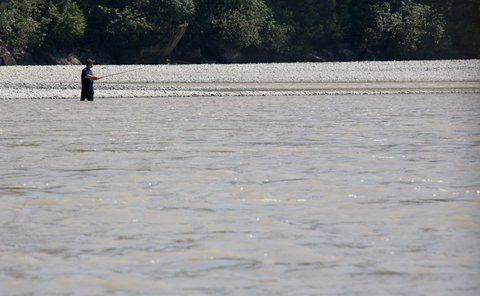Now’s the time of year when fishing rivers for trout and smallmouth finds its way into anglers’ schedules.
River fish don’t behave the same way as the fish in your lakes and farm ponds do, though. They’re very reliant on the river’s current, which is something anglers must consider if they plan on having any success on the river.
There are some real simple Dos and Don’ts where river fishing is concerned, and knowing a few of them can make all the difference.
DO Fish Upstream
The current is what brings food to river fish. For this reason, they tend to suspend facing upstream. To take advantage of this, cast upstream and retrieve your bait with the current. This creates a more natural presentation and will allow the fish to get a great look at your lure. Fishing against the current will just cause your bait shoot by the fish from behind, resulting in far fewer strikes.
DON’T Limit Your Targets
Too many anglers tend to limit their river casting targets to the slack water behind objects like rocks or log jams, assuming that these are the best spots to find fish. Sure, there may be some fish hanging out in slack water areas, but these fish are likely to be either inactive, resting, or on to your tricks. The more active, feeding fish in a river will likely be on the edge of the current or in an eddy—right where the bait is. Don’t overlook these areas just because heavy current is hitting them.
DO Look for Eddies
Eddies are slack water areas without current that are typically created any time something juts out into the flow, like a log or a rock. The current hits these objects and creates an eddy either next to or behind it. Eddies provide fish with a place to rest while still giving them the opportunity to feed on anything the current brings their way.
DON’T Lose Your Patience
While you can move to a new spot on the lake if you aren’t getting bites, you can’t do this in a river. The strike zones in a river are much smaller than in a lake, meaning the fish will be hanging out behind rocks to stay out of the current. This also means you may have to run your bait through an area several times to get a strike. I prefer to take twice as long to fish through an area on a river than on a lake.
Photo credit: Dreamstime.com








